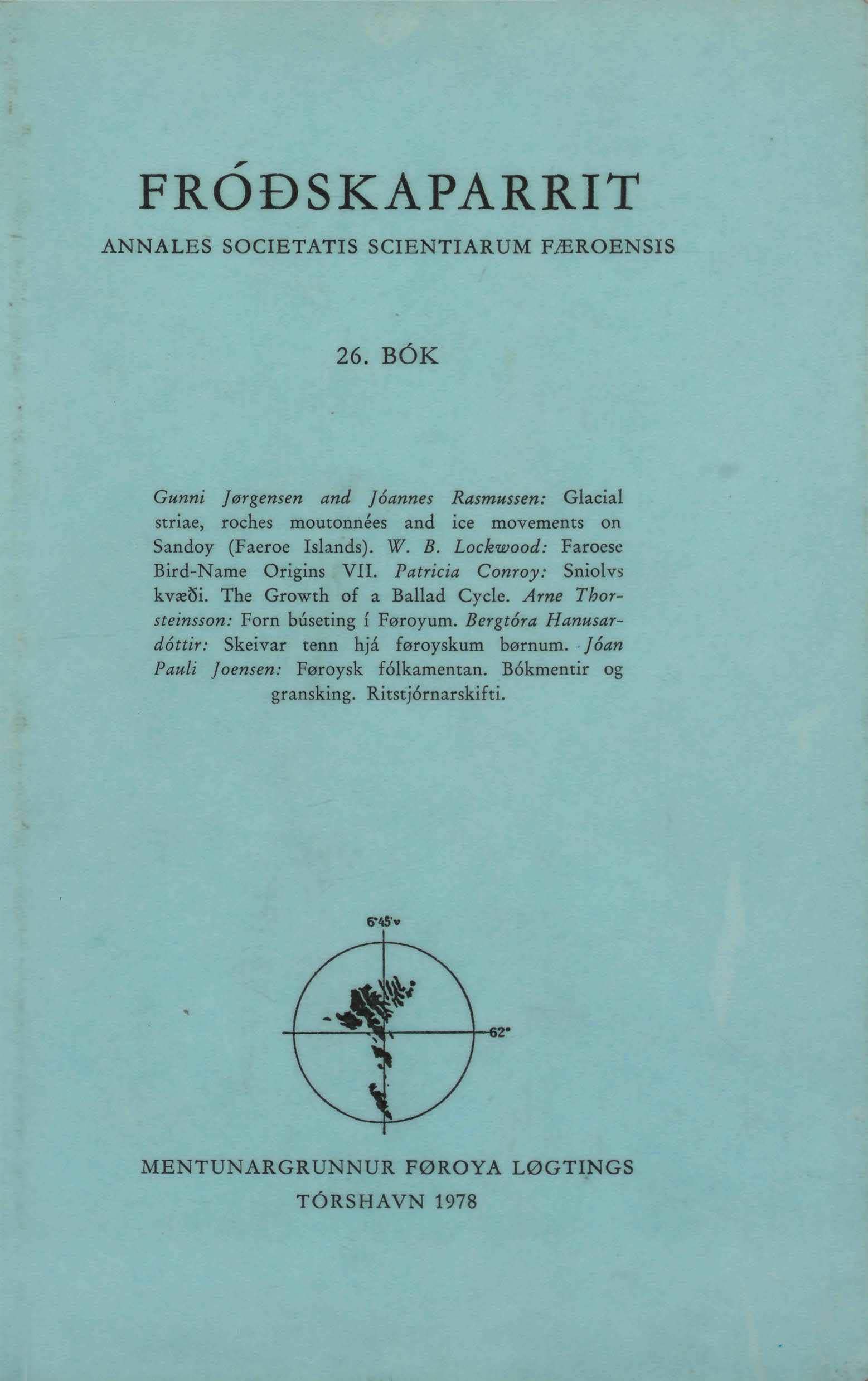Forn búseting í Føroyum Old settlement in the Faroes
##plugins.themes.bootstrap3.article.main##
##plugins.themes.bootstrap3.article.sidebar##
Abstract
From the time of the first seetlement until the end of the 19th century life in the Faroes was based on farming and its sidelines (fishing, fowling and the hunting of pilot whales etc.) which became linked together into an economic whole in which the produce was divided according to the rights of ownership or use of land. Therefore, matters of the land were decisive for all society and have, among other things, governed the process of settlement.
Research into place-names suggests that original estates of the time of settlement included several villages and, in some cases, whole islands. These large estates were, however, quickly divided up with the result that one estate comprised one village. Further division of estates formed several estates in the same village, but still standing on their own, and the foundation was laid for býlingar. Chr. Matras estimates that this step was taken about 1300, while Róland Høgnesen estimates that by the
period 1300—1400 only half the villages had been founded. Further division of the býlingur-estaxes formed several farms (houses) in the same býlingur, and Chr. Matras estimates thas this took place after 1600. The pattern of settlement in the middle ages becomes thus formed of scattered estates, one in each býlingur. This corresponds to the usual archaelogical
conception of Norse medieval estate.
In this article I have endeavoured to show by the coordinated handling of archaeological, historical and philological sources that the above-mentioned division of estates must have gone ahead much more quickly thau has hitherto been accepted. In the Viking age we already have firm archaeological indications that several estates existed in the same village (i. e. that býlingar had already been formed in the Viking age) and in a single case the possibility that several households lived on the same estatc.
The oldest acceptable documentary source material shows that by the 16th century the division of býlingar into smaller farms had already come a long way and a similar example of division has even been found in a source from 1412. It is conceivable that the division of býlingur-estatcs into smaller farms, which prepares the economic foundation for several houses in the same býlingur, began early in the middle ages and was a direct continuation of the regular process which in the Viking age dividcd
up settlement estates into villages and villages into býlingar. This regular historical process was based on the system of inheritance in force, which is found justified in the oldest preserved Norse legislation, and is still today practised in Faroese villages where modern legislation concerning registration and division of land is not yet in force. However, in the middle ages, the Church, the King and foreign nobles, by appropriating land, hindered the inheritance laws from breaking up
all Faroese land into narrow strips, as alloidal land is today.
Early in the medieval period these institutions had already begun to appropriate one estate after another. Such estates were not divided up any smaller than they were at that time, unless a direct administrative decision was taken concerning that matter. In this way, by the time of the Reformation about half the land was exempt from the system of inheritance. In 1600 some Faroese býlingar and a few small villages, about 30 in number, were still a single estate, while almost all other
býlingar had been divided up.
It is decisive for an archueological evalution of a Norse medieval estate whether the land belongs to the Church, the King or other institution, or whether it is alloidal land. In the former situation the estate can be one farm with one household, while in the latter it will usually have already been divided up into several farms and households in the medieval period. býlingur sing, býlingar pl; 'small group of houses forming a separate subdivision of a village'.
##plugins.themes.bootstrap3.article.details##

This work is licensed under a Creative Commons Attribution-NonCommercial-ShareAlike 4.0 International License.
